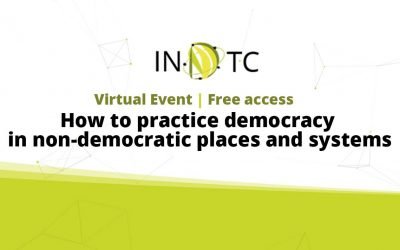
Underpinnings of the therapeutic community individualgroup dialectic, between clinical organisation and daily life
Abstract
This contribution offers a general overview that departs, above all, from a relationship with the Mito&Realtà network, and describes the underpinning of the community architecture, highlighting the basic arrangement and internal articulations that work together to achieve the clinical, rehabilitative and social aims that form its mission. The TC is presented as a complex organism and course of treatment defined in space and time, and that develops from an initial moment of reception (trial period, assessment process and rehabilitative therapeutic contract), into individual, group interventions (assemblies, meetings, various group typologies) and interventions with families, a phase of insertion, attachment and start of detachment from the social network. Great importance is placed on daily life and the climate as background for integration and transformation, beginning with the results of the international literature and recent infant research studies on processes of affective attunement, rupture and reparation.
Intro
The Therapeutic Community (TC) is a living organism, an orchestration of multiple instruments and players (workers, residents, family members, referrers, natural networks, etc.). An institution, therefore, aptly evoked by the above-cited image suggested by Anna Ferruta of a solid but light and mobile architecture. I will attempt, in this contribution, to describe the underpinning of this architecture, highlighting its foundations and the distribution of its interior spaces, which combine to allow it to accomplish its clinical, rehabilitative and social aims. Beyond its specific objectives, it is important to categorise the various therapeutic communities (TCs) according to their diverse features.
There are those for adult, adolescent and minor-age residents, psychotics, mothers and children, battered women, and so forth; typologies both long-lived as well as those that have sprung up recently across the country. An overview, in other words, prompted by knowledge of the communities of the Mito & Realtà network that, for some years now, have been elaborating indicators that could constitute a common denominator for an Italian “community model”.
Despite the diversity of types of underpinnings and organisation (privately accredited or public), they do share an initial fundamental: their democratic foundation. This consists of a distinct yet conversant clinical and administrative leadership, a staff that functions as a “followership” (1) that promotes and supports its multiple activities with a group co-responsibility oriented toward the integration (2) and maintenance of a safe and protective emotional/affective climate for residents and workers alike. (Correale 1990; Obhlozer, Perini 2001, Perini 2012; Ferruta 2012). Communities with clear confines but permeable and open to continuous theoretical/clinical encounter with other TCs and to integration with the local or broader regional, national and international social fabric (Barone, Bruschetta 2015).
For those seeking integration, the therapeutic community offers a course of treatment with a definite time and space in which to develop that continuing dialect between individual intimacy and private listening and group experiences that foster encounter with the other (both symbolic and real) in the multiple behaviours and projects that continuously intersect in daily life. Thus, on the one hand, it offers a “custom-fit” evolutionary project with a personalised central reference point (caregiver or psychotherapist) aimed at cohesion, strengthening of the self and acquisition of the ability for reflection.
On the other, a group dimension that can increase a sense of belonging and responsibilization as the premise for a gradual receptiveness to connection with the social and family networks outside the TC. It is on this difficult co-existence and oscillation between the Self and the Other that the majority of the treatment’s efficacy depends, even with inevitable upsets that range from shut-down and withdrawal to enthusiastic and often explosive immersion (Napolitani, 1987).
Residential treatment immerses us in a highly complex and multidimensional situation that requires a specific kind of organisation. Indeed, a patient in a community undergoes various “interventions” contemporaneously: psycho-pharmaceutical, individual and group therapy, psychosocial rehabilitation, family intervention, the influence of the milieu on the natural course of the disorder, contingent events, and so forth. It is therefore necessary in a TC that we speak of “therapeutic relations” rather that of the “therapeutic relationship” (Maone, 2011).
In any case, however, even for more serious patients, the quality of the interpersonal relations is revealed as the core of the practice, and favourable results stem from a wide range of settings and patient populations. Therefore, the question is to articulate these multiple settings flexibly according to the phase of the personalised and shared therapeutic course of treatment, utilising the potential of both individual and collective spaces fully.
On what does the successful development of this individual-group dialectic depend?
According to international studies (Priebe, Gruyters, 1993; McCabe, Priebe, 2004), and countless years of treatments administered and patients released, the prerequisites are the shared involvement of the patient, family, referral service and TC group in the project’s construction, and the therapeutic alliance that is forged in the preliminary phase that every community that calls itself therapeutic must seek to ensure…
Read full version
Thanks to authors’s contribution this scirntific article is free. To download the integrated version it is necessary to become a member of the network.
Article author
Marta Vigorelli
Contribute by enriching the contribution
You May Like
Dialogue, conflict, Green care.
Florence (and online) Tuesday 11 October INDTC organizes a conference on how to practice democracy in therapeutic communities and in society.
How to practice democracy in non-democratic places and systems
Virtual Event This event follows the “International Meeting of Babel: The Democratic Therapeutic Community in the World, today”. On that occasion, the dialogues between participants from different corners/parts of the world led to discover a theme of common...
4th International Mental Health Meeting – From Symptoms to Stories | Lisbon 2021
The Fourth International Mental Health Meeting of Romão de Sousa Foundation on the 5th and 6th of November 2021 in Lisbon (Portugal).







0 Comments